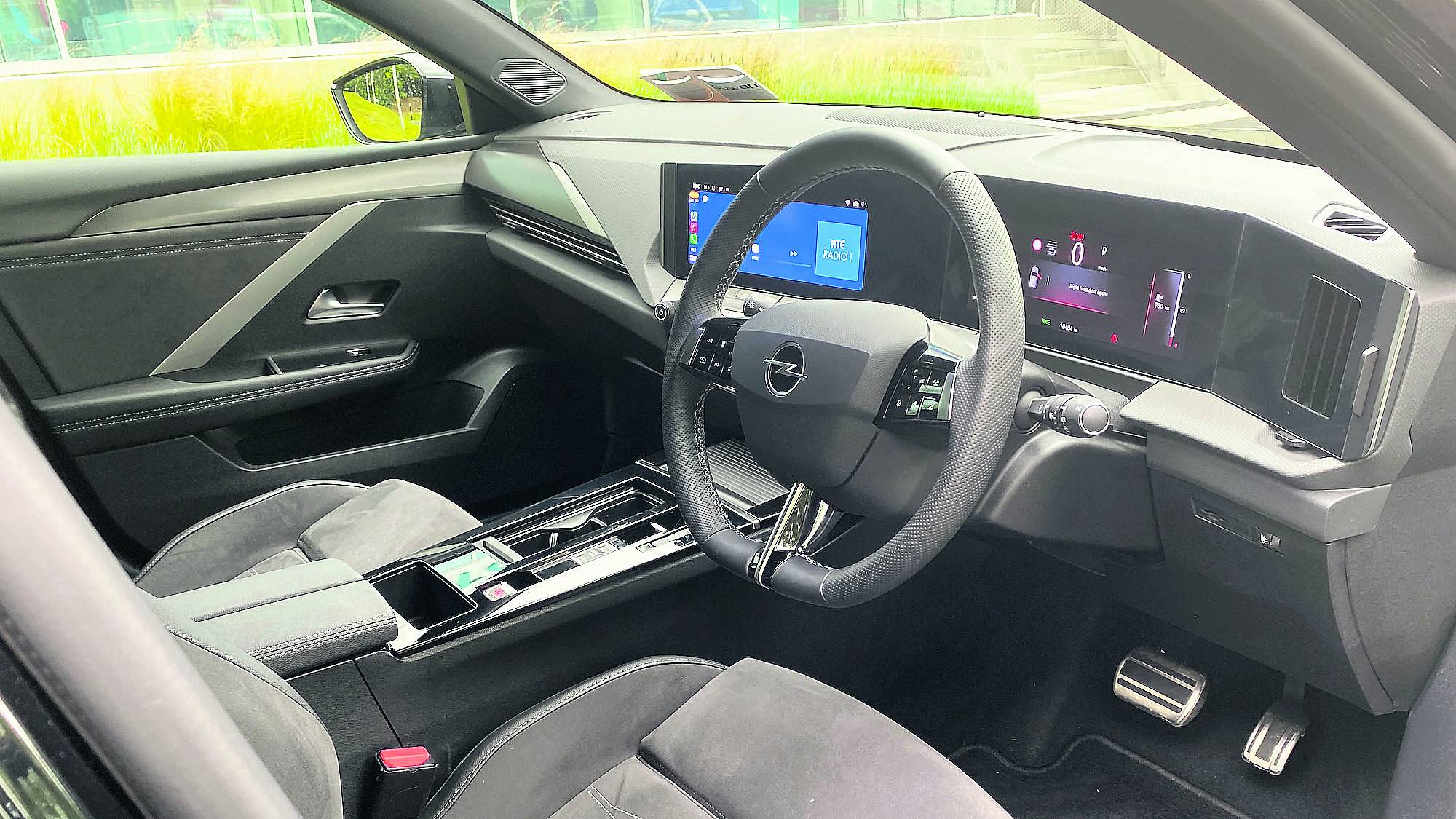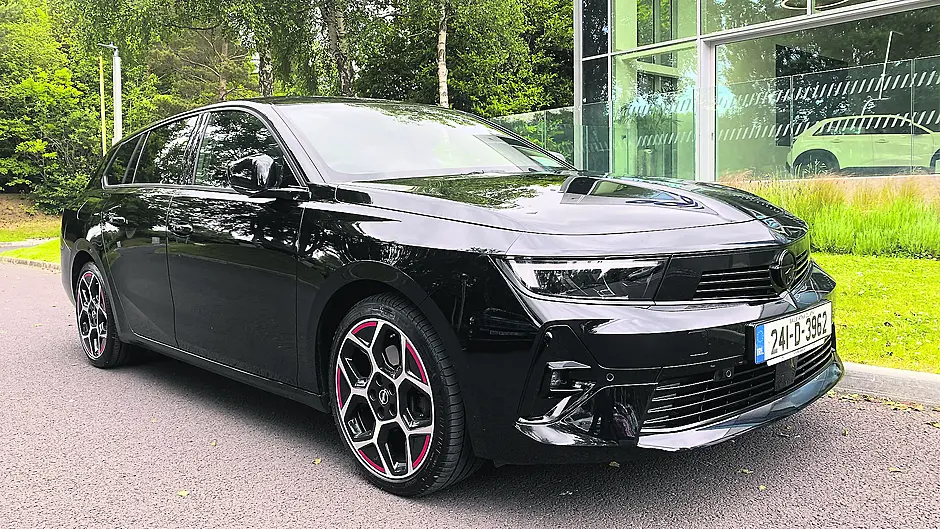BY BRIAN BYRNE
I ASKED a colleague what he thought about the Opel Astra Sports Tourer and he considered for just a short moment. ‘It’s everything you could want in a car,’ he replied. I value his opinion, so when I got around to driving the same car his words were in my head again.
Sports Tourer is Opel’s current name for an estate, or what used to be wagon in American cars language. With my own first cars being Opel Rekord estates, followed by Vauxhall Viva estate versions — yes, a long long time ago — I have always had a grá for the format. Still do, even in these times of the ubiquitous crossover-SUV. So I was also curious to see how this sixth generation Astra wagon compared with those Rekords of the mid- to late 1960s. In fact, the Astra Sports Tourer is longer.
That was interesting if only because in those days I was a central heating contractor, and the Rekord wagon could carry 20 lengths of half-inch gun-barrel piping on the roof racks, along with six radiators and a boiler inside with the rear seats folded.
The 60hp petrol engine with four-speed column-shift gearbox managed all that quite well, even on runs over mountains. The suspension was usually down to the rubber bump-stops at times, but even at nearly 50,000 miles a year, the cars survived quite well.
Would I load the latest Astra wagon like that? Even though it comes with a 130hp diesel in the review car, I’m not so sure the much more sophisticated car of today would stand up to that kind of abuse. Which is what it was. Today we’d use proper vans.
The Astra Sports Tourer is at every angle a good looker. The straight edges and angles of current Opel styling (similar to what they were in the 1960s) are smart and stylish. There’s a thrust forward in the car’s presence, with the lower height and stretch of the estate format making the whole aspect sleek.
A personal dislike was the review car’s Black Pack that effectively made the ‘blitz’, branding, and nameplate invisible against the car’s black colour.

That lower car height does make a difference to getting down and into the vehicle, especially for this lanky and less supple writer. Also especially after we’ve all got so used to the higher door opening in crossovers. Still, nothing too difficult, really.
Once in, a similar edgy styling pertains across the driver’s and dashboard area. A wide combined infotainment and driver information setup is integrated with the right-hand ventilation louvres, so it all looks very coherent. There’s the welcome Stellantis Group setup of piano-style climate switches and a physical volume knob, and as the car was an automatic, the shifter was that flick-switch centre console affair that works so well. I’ve previously complimented also the Stellantis Group’s intuitive and clear steering wheel switches and buttons.
The interior material of current Opels seems to be quite dark, but there is enough highlighting in the detail to ease this, both across the dashboard and console trim and the door furniture. I’d like to try one with a lighter theme, though. The overall finish and materials promise long wear without much abrasion.

Rear seat passengers of even more than average height would find themselves with decent space, and the cargo capacity of 540 litres is a champion chunk beyond the hatch version. I no longer have the access to radiators and boiler to try out that aspect, and anyway the finish of the space would be too nice to subject it to such use, but the Astra Sport Tourer might well be quite able if so pushed.
The engine certainly would manage it. With more than twice the horsepower of my Rekords, at 130ps, and in the 1.5 turbodiesel and the 8-speed automatic that comes standard with it there’d be more than enough pulling power under pressure
But what really impresses with the review car’s powertrain is the economy. This car almost seemed to manufacture fuel as it drove, with the digital needle on the fuel gauge unbudging over the 1,100km range for an unbelievably long time.
Apart from that, the overall drive experience showed how well Opel’s engineers have managed the compatibility of all the components with each other, torquey engine and lots of close gear ratios, along with a suspension that in my time never came anywhere close to the bump stops. If they even have bump stops any more.
As the man said, everything you could want in a car.








